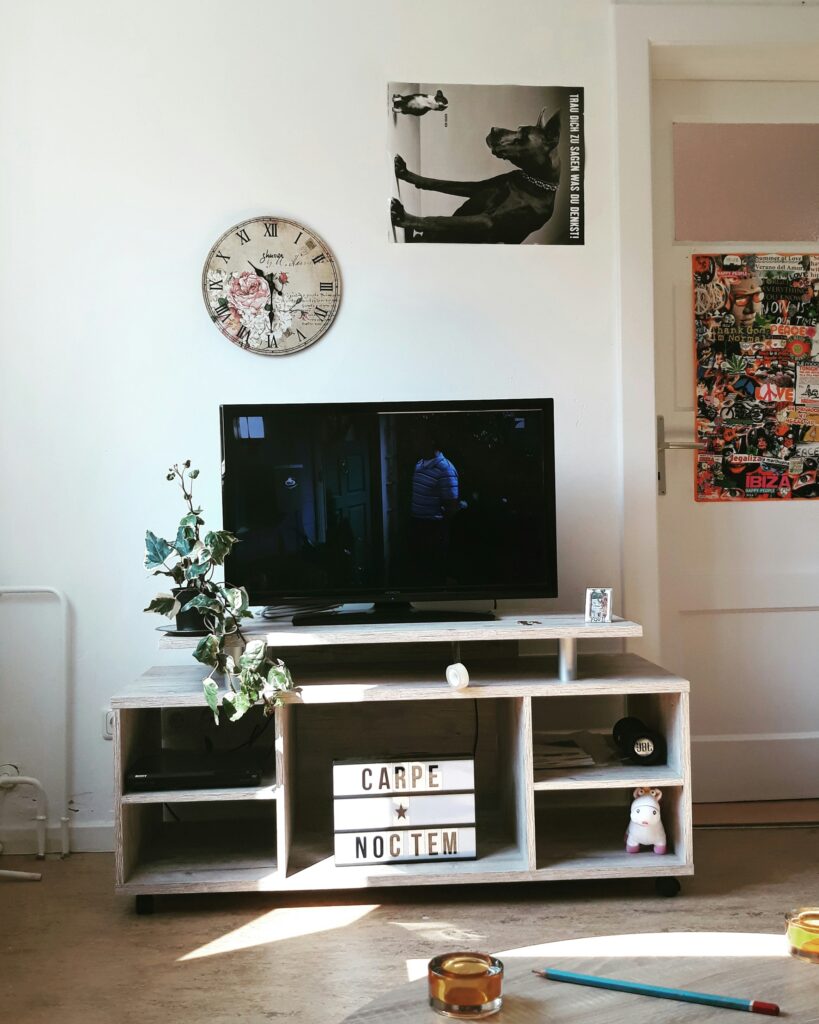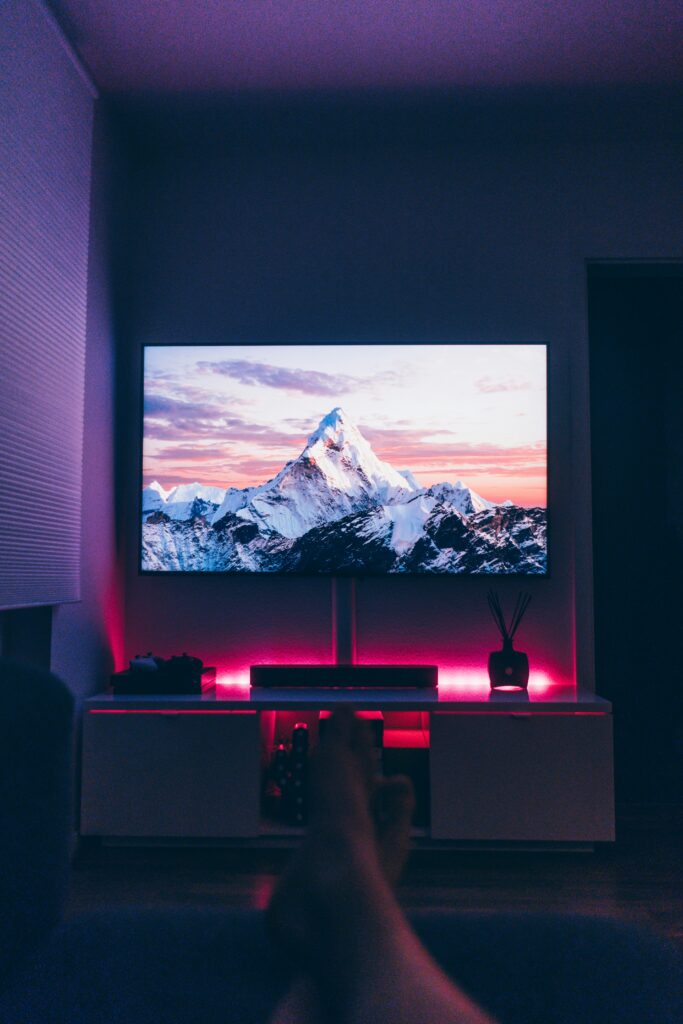Table of Contents
What is Needed for a TV Mount? Essential Tools and Requirements for a TV Mounting
Introduction
What is needed for a TV mount? Mounting your TV on the wall is a great way to save space and achieve a clean, modern look in any room. However, to ensure the TV is mounted securely and safely, it’s essential to use the right equipment, tools, and techniques. In this guide, we will explore everything you need to successfully mount your TV, from choosing the right wall mount to the tools necessary for the job.

1. Choosing the Right a TV Mount for Your TV
Before you start the mounting process, selecting the appropriate TV wall mount is crucial. Different TV mounts offer varying features based on the size, weight, and type of TV.
Types of TV Mounts:
- Fixed Mount: Keeps the TV stationary in one position.
- Tilting Mount: Allows you to tilt the TV for better viewing angles.
- Full-Motion Mount: Offers the most flexibility, allowing you to swivel and extend the TV in multiple directions.
Make sure to choose a mount that’s compatible with your TV’s size and weight, and ensure it fits the VESA pattern on the back of the TV.
2. Tools Needed for Mounting a TV
To properly mount a TV, you’ll need a set of essential tools to ensure a secure and level installation.
Essential Tools for TV Mounting:
- Drill: For drilling holes into the wall and for inserting anchors or screws.
- Screwdriver: To attach the mounting bracket to the TV and wall.
- Stud Finder: Helps locate the wooden studs behind drywall to secure the mount.
- Level: Ensures that the TV is mounted straight.
- Tape Measure: To measure the correct height and alignment for the TV.
- Pencil or Marker: To mark the placement of screws and drill holes.
3. Determining the Wall Type
Understanding the type of wall you’re mounting the TV on is crucial for choosing the right tools and mounting method.
Common Wall Types for a TV Mounting:
- Drywall with Wood Studs: The most common type of wall, which requires you to mount the TV to the studs behind the drywall.
- Concrete or Brick: Requires masonry anchors and special tools for installation.
- Plaster: Requires similar techniques to drywall but might require stronger anchors due to the material’s density.
Make sure to choose the right hardware based on the type of wall you’re working with.
4. Selecting the Right Screws and Anchors
The screws and anchors you use play an important role in securing the a TV mount to the wall. You’ll need heavy-duty screws and anchors that can support the weight of the TV.
Choosing the Right Screws and Anchors:
- For Drywall: Use screws that are long enough to anchor into the studs. Consider using wall anchors for additional support if studs are not available.
- For Concrete/Brick: Use masonry screws and anchors specifically designed for use with concrete and brick.
- For Plaster: Use anchors that are designed for heavy-duty plaster walls to avoid cracking.
5. Measuring the Right Placement for the a TV Mount
Once you have your tools and materials, it’s time to determine where to mount the TV. Proper placement ensures a better viewing experience and enhances the aesthetics of the room.
Steps for Proper TV Mounting Placement:
- Height: The TV should be at eye level when seated for comfortable viewing.
- Viewing Angle: Consider the layout of the room to ensure optimal viewing from all angles.
- Distance from the Wall: For full-motion mounts, ensure there is enough space to extend and swivel the TV.
6. Preparing the Wall for Mounting
Preparing the wall before you mount your TV is important for ensuring a secure installation.
Wall Preparation Steps:
- Locate the Studs: Use a stud finder to locate the studs behind the wall. Mark the spot where you plan to drill holes.
- Level the Mount: Use a level to make sure the mount is straight before drilling.
- Drill Pilot Holes: Drill small pilot holes where you’ll insert the screws and anchors.
7. Attaching the a TV Mounting Bracket
Once the wall is prepared, it’s time to attach the mounting bracket to the TV. Follow the manufacturer’s instructions to ensure the bracket is properly secured.
How to Attach the Mounting Bracket:
- Use a screwdriver to attach the mounting bracket to the back of the TV.
- Make sure the bracket is aligned with the VESA mounting holes on your TV.
8. Mounting the TV on the Wall
With the wall mount bracket secured to the wall and the TV bracket attached, it’s time to mount the TV.
Mounting the TV:
- Carefully lift the TV and hook it onto the wall mount.
- Secure the TV to the mount using screws provided with the TV mount.
- Double-check the TV is level and stable.
9. Cable Management Tips
Once the TV is mounted, cable management is crucial for a clean and organized appearance. There are several ways to hide cables and wires for a neat installation.
Cable Management Solutions:
- In-Wall Cable Management: Conceal cables inside the wall for a completely clean look.
- Cable Covers: Use surface-mounted cable covers to hide wires along the wall.
- Cable Ties: Keep cords organized behind the TV.
10. Final Checks and Safety Tips
Before you finish the mounting process, it’s important to double-check everything to ensure the TV is securely mounted and safe.
Final Safety Checks:
- Ensure the TV is level and securely attached to the mount.
- Test the stability of the TV by gently pulling on it.
- Make sure all cables are securely connected and neatly organized.

Conclusion
What is needed for a TV mount? A successful TV mounting project requires the right equipment, tools, and techniques. By following these essential steps and using the proper materials, you can mount your TV securely and safely, creating a clean and modern look in your home. Whether you choose to mount the TV yourself or hire a professional, always ensure that safety is a priority for the best results.
FAQ
1. What is needed to mount a TV on the wall?
To mount a TV, you’ll need a TV mount compatible with your TV’s size, a stud finder, drill, screwdriver, level, screws, and anchors. You may also need cable management tools.
2. Can I mount my TV on drywall?
Yes, you can mount a TV on drywall, but you must secure the mount to the studs behind the drywall using the appropriate anchors and screws for the TV’s weight.
3. How do I find the studs behind drywall?
Use a stud finder to locate the studs. Mark the edges of the studs, then drill into the center of the studs to secure the mount.
4. What size screws do I need for a TV mounting?
The size of screws needed depends on the mount type and wall material. For drywall, 2.5-inch screws are typically required for securing the mount to studs.
5. How do I ensure the TV is mounted at the right height?
Mount the TV at eye level when seated, typically around 42 to 48 inches from the floor. Adjust the height based on the seating arrangement in the room.
6. Should I hire a professional for TV mounting?
If you are unsure about the process or have a complex wall type (like brick or plaster), it’s a good idea to hire a professional to ensure a secure installation.
7. How do I hide the wires after mounting my TV?
You can use cable management solutions such as cable covers, in-wall conduits, or cable ties to keep wires out of sight and organized.
8. How long does it take to mount a TV?
Mounting a TV typically takes 1 to 2 hours, depending on the wall type and the complexity of the mount.
9. Can I mount a large TV on any wall?
It depends on the wall type. Ensure that the wall can support the weight of the TV and that you have the proper mounting tools and hardware.
10. What’s the best way to mount a TV on a brick or concrete wall?
For brick or concrete walls, you’ll need masonry anchors and screws. It’s recommended to drill pilot holes and use strong anchors designed for masonry.
Follow us on Facebook for Quick Response & Quires – 24/7 Task Connect